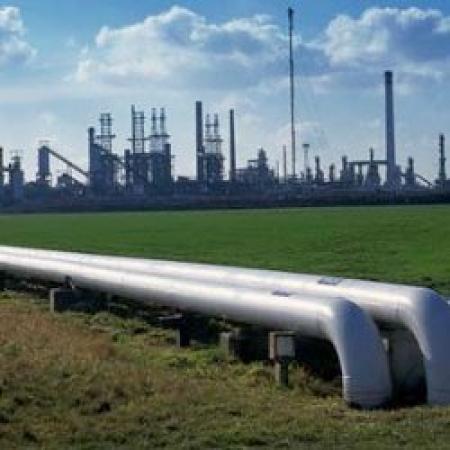ID :
151663
Mon, 11/29/2010 - 17:55
Auther :
Shortlink :
http://m.oananews.org//node/151663
The shortlink copeid
Iran’s share in global gas trade to increase

Tehran, Nov 29, IRNA – President Mahmoud Ahmadinejad and his Turkmen counterpart Gurbanguly Berdymukhamedov on Sunday opened the last section of a pipeline to export Turkmen gas to northeast Iran.
The two presidents opened final half of the 1,000-kilometer (620 miles) pipeline, which links Tehran to Khangiran refinery near the northeastern Iranian town of Sarakhs.
Once operational, the project will boost Iran’s share in global gas trade and address demands of Iranian gas consumers.
Under the project, Iran’s gas imports from Turkmenistan will reach 20 million cubic meters a day in the first phase, and then it will rise to 45 million cubic meters a day in the coming phases.
The pipeline has a daily capacity of 58 million cubic metres or more than 20 billion cubic metres per year, Iran's deputy oil minister, Javad Owji, said ahead of the ceremony.
Despite having the second largest gas reserves in the world, Iran's own production of 600 million cubic meters per day barely meets its domestic consumption.
Iran, which injects gas into oil wells to better exploit its oil reserves, also imports about 20 million cubic meters of Turkmen gas per day and exports about the same amount to neighbouring Turkey.
With an overall cost of 1.2 billion dollars, the Sarakhs-Tehran pipeline extends a cross-border pipeline launched in January between Turkmenistan's Dovletabad gas field and Iran's Khangiran refinery.
The cross-border pipeline between Iran and Turkmenistan has an annual capacity of six billion cubic meters or 16 million cubic meters per day which is expected to eventually double to an annual 12 billion.
Since 1997 Iran has imported Turkmen gas via another pipeline with the capacity of eight billion cubic meters per year linking the Turkmen field of Korpedje on the Caspian Sea to the northern Iranian town of Kord-Kuy.
Iran's gas imports from Turkmenistan are expected to reach 40 million cubic meters a day (about 14 billion cubic metres per year) this winter, Owji said in June.
The Sarakhs-Tehran pipeline would also allow Iran to become a regional 'gas hub,' by increasing its gas swap capacity with neighbours and having Central Asian gas transit through its territory to Europe./end
The two presidents opened final half of the 1,000-kilometer (620 miles) pipeline, which links Tehran to Khangiran refinery near the northeastern Iranian town of Sarakhs.
Once operational, the project will boost Iran’s share in global gas trade and address demands of Iranian gas consumers.
Under the project, Iran’s gas imports from Turkmenistan will reach 20 million cubic meters a day in the first phase, and then it will rise to 45 million cubic meters a day in the coming phases.
The pipeline has a daily capacity of 58 million cubic metres or more than 20 billion cubic metres per year, Iran's deputy oil minister, Javad Owji, said ahead of the ceremony.
Despite having the second largest gas reserves in the world, Iran's own production of 600 million cubic meters per day barely meets its domestic consumption.
Iran, which injects gas into oil wells to better exploit its oil reserves, also imports about 20 million cubic meters of Turkmen gas per day and exports about the same amount to neighbouring Turkey.
With an overall cost of 1.2 billion dollars, the Sarakhs-Tehran pipeline extends a cross-border pipeline launched in January between Turkmenistan's Dovletabad gas field and Iran's Khangiran refinery.
The cross-border pipeline between Iran and Turkmenistan has an annual capacity of six billion cubic meters or 16 million cubic meters per day which is expected to eventually double to an annual 12 billion.
Since 1997 Iran has imported Turkmen gas via another pipeline with the capacity of eight billion cubic meters per year linking the Turkmen field of Korpedje on the Caspian Sea to the northern Iranian town of Kord-Kuy.
Iran's gas imports from Turkmenistan are expected to reach 40 million cubic meters a day (about 14 billion cubic metres per year) this winter, Owji said in June.
The Sarakhs-Tehran pipeline would also allow Iran to become a regional 'gas hub,' by increasing its gas swap capacity with neighbours and having Central Asian gas transit through its territory to Europe./end





